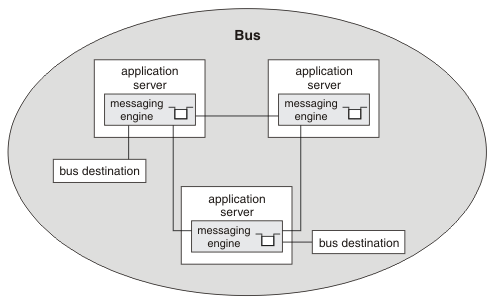Multiple-server bus without clustering
A bus that consists of multiple servers provides advantages of scalability, the ability to handle more client connections, and greater message throughput. A multiple-server bus includes multiple messaging engines that can share the work of storing and distributing the messages.
Another advantage of a multiple-server bus is that we can locate the queue an application consumes from in the same application server as that application, which might be more efficient if there are multiple application servers running applications.
We can configure a bus to have multiple server bus members, each of which runs one messaging engine. All the servers in the bus must belong to the same cell.
All the messaging engines in the bus are implicitly connected, and applications can connect to any messaging engine in the bus. All the messaging engines in the bus know about the resources that are assigned to each messaging engine in that bus.
The messaging engines do not need to all run at the same time; if one messaging engine stops, the other messaging engines in the bus continue to operate. However, if a messaging engine stops, the resources that the messaging engine owns are unavailable. Specifically, the destinations assigned to that messaging engine are unavailable.
Figure 1. Service integration bus with multiple servers

Related: